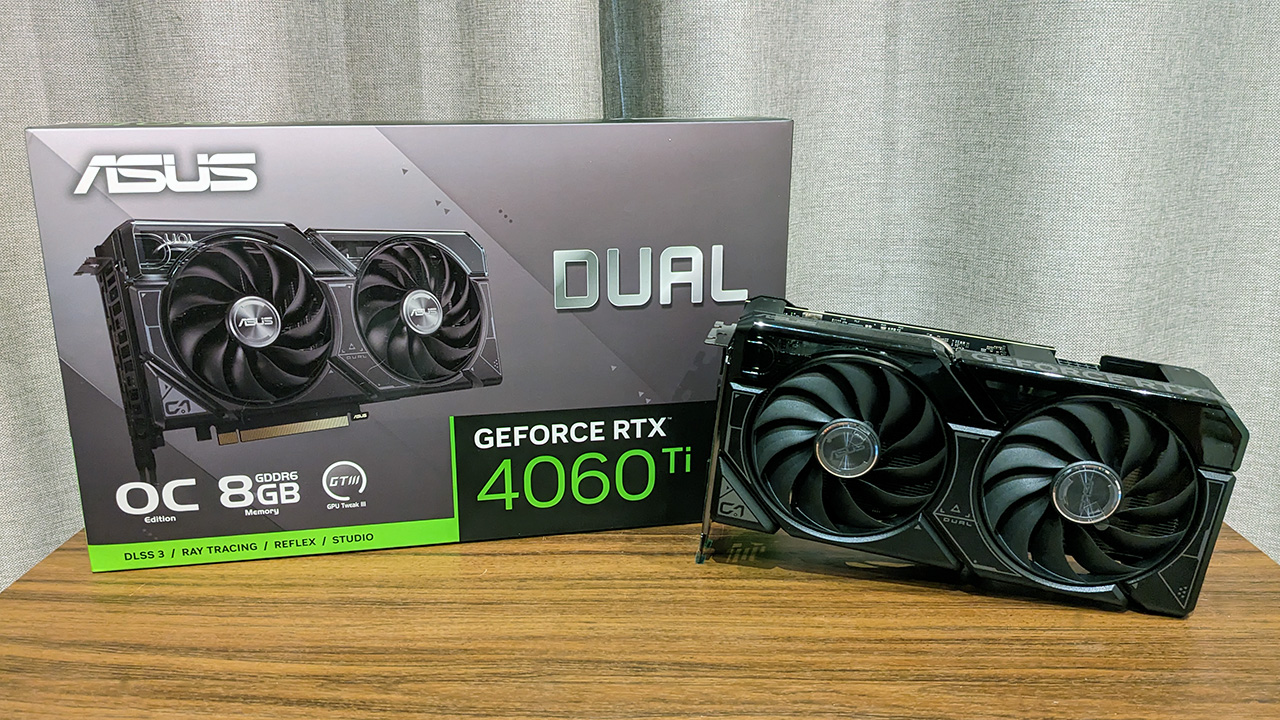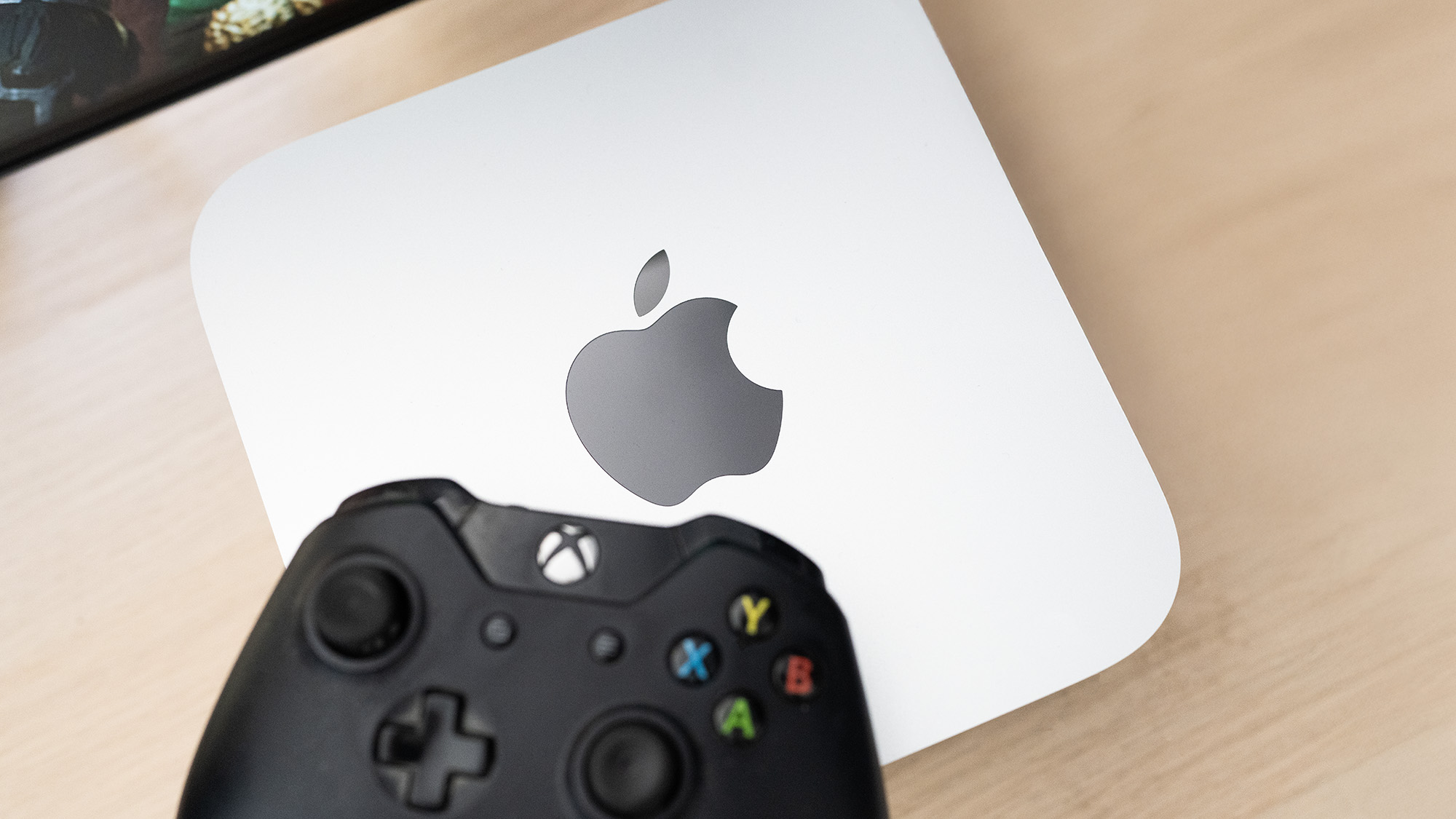Our Verdict
Asus' Dual RTX 4060 Ti is fundamentally a very good graphics card with excellent power efficiency, a smart design, and the Ada generation feature set. But like all RTX 4060 Ti cards, it's more expensive than a board with a small chip and middling spec has a right to be. Last gen graphics cards also still present formidable competition. At least while they remain in the market.
For
- A good value RTX 4060 Ti offering.
- DLSS 3 and Frame Generation support
- Quiet operation
Against
- All RTX 4060 Ti cards feel overpriced
- Not a compelling upgrade over the RTX 30 cards it replaces
- Concerns over the longevity of an 8GB card's performance
PC Gamer's got your back
The Nvidia GeForce RTX 4060 Ti is Nvidia's latest Ada Lovelace card. Though it is to be joined by the RTX 4060 within days of the publication of this review, for now the RTX 4060 Ti is the cheapest RTX 40-series card. That makes it a very important one, not for just for Nvidia, but for the PC gaming market overall. Nvidia's XX60 level cards are usually the most popular of any given generation, and these cards really do sell in volume.
Here I've got the Asus Dual RTX 4060 Ti OC Edition. The entry level Dual range may not get the attention or coverage of the likes of Asus' own TUF or Strix models, but by dropping the bells and whistles and focusing on the basics, the Asus Dual comes in at $399. That's the base MSRP of the base RTX 4060 Ti. Yep, Asus can do a value offering as well as any of the major brands.
If you'd like to get a rundown and a deeper dive into the RTX 4060 Ti and its underlying AD106 GPU, check out the RTX 4060 Ti Founders Edition specs section. It may not set the world alight at this $400 price point, but its core feature offerings and technology checklist is solid. Who knows? Pricing is arbitrary and should the RTX 4060 Ti drop into the lower $300 range, then judgements about its relative value will obviously have to be reassessed.
Before I get ahead of myself, however, allow me to properly introduce the Asus Dual RTX 4060 Ti 8G OC Edition. It comes with a mild factory overclock, a simpler dual fan cooler and, unlike the Founders Edition RTX 4060 Ti, it comes with a single 8-pin PCIe power connector. Forget about monstrous triple fan quad slot cooling, all-pervasive RGB, or expensive accessories, this is a card that sticks to the basics at the reference price point.
Asus Dual GeForce RTX 4060 Ti OC overview and specs
The Asus Dual RTX 4060 Ti OC is built around the AD106 GPU. It's a small chip at 190 mm² built with TSMC's 5nm process. Like all RTX 4060 Ti's, it comes with 4352 CUDA cores enabled, out of the AD106's maximum possible 4608. It includes 48 ROPs, 34 RT cores and 136 tensor cores. It connects to the system via a PCIe 4.0 8x interface.
Surprisingly, apart from having a much larger L2 cache (32MB vs 4MB), the RTX 4060 Ti's specs are a step below the much larger GA104 chip that powers the RTX 3060 Ti, despite both having the same launch price. That means Nvidia is surely making more money per RTX 4060 Ti sold. It's all relative though We aren't dealing with peak mining craziness, when RTX 3060 Ti's were insanely priced.
The Asus Dual has a boost clock of 2565MHz. That's a small increase of 30MHz over the Founders Edition. 8GB of 18Gbps memory connects to a 128-bit bus giving a maximum of 288GB/s of memory bandwidth. On paper that's a pretty middling memory spec. There's been a lot of debate over whether 8GB is sufficient for gaming in the mid to long term. We'll have to see how games like Starfield or Grand Theft Auto 6 among others perform before passing final judgment on that. Anyway, there will be a 16GB version on sale soon if you're prepared to pay the rather hefty premium for it.
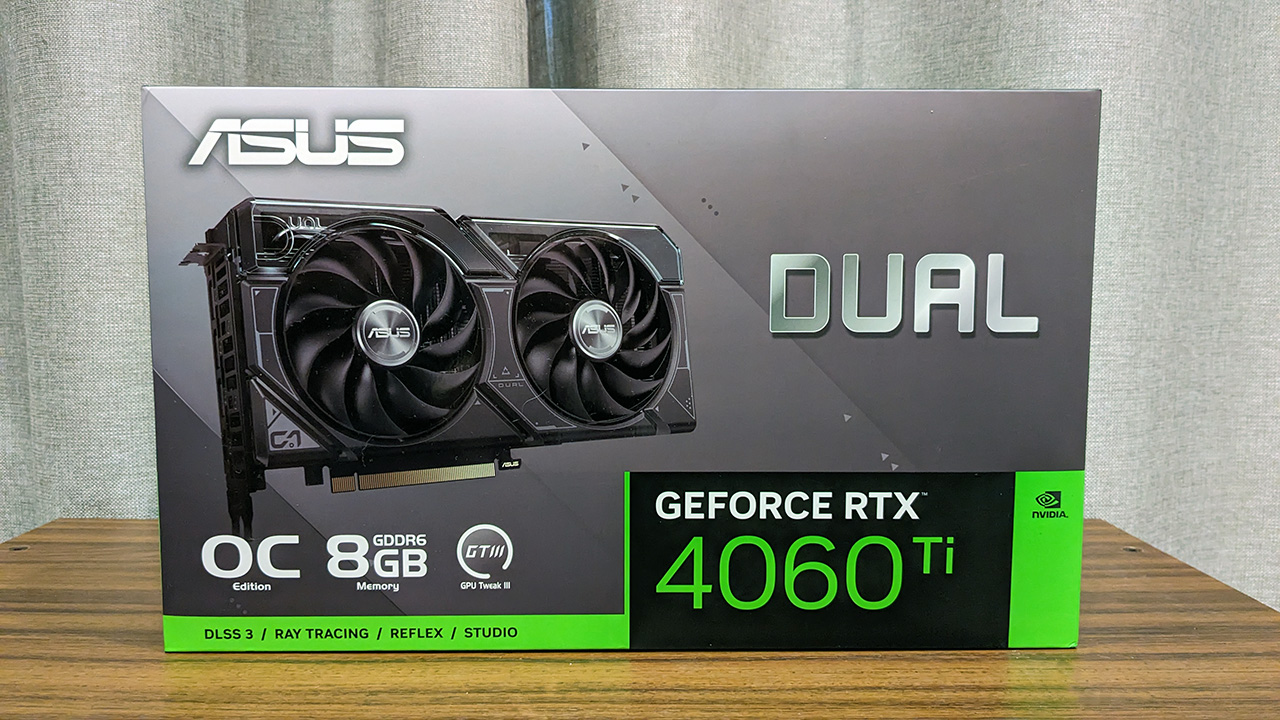
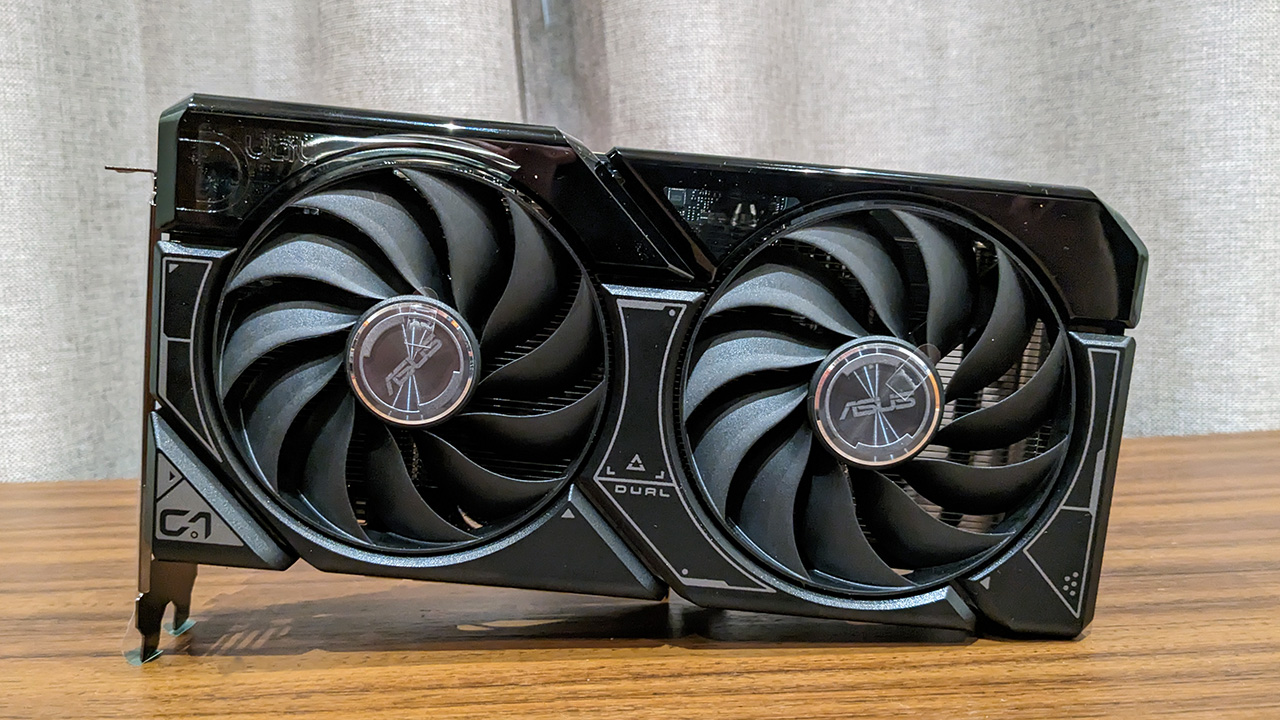
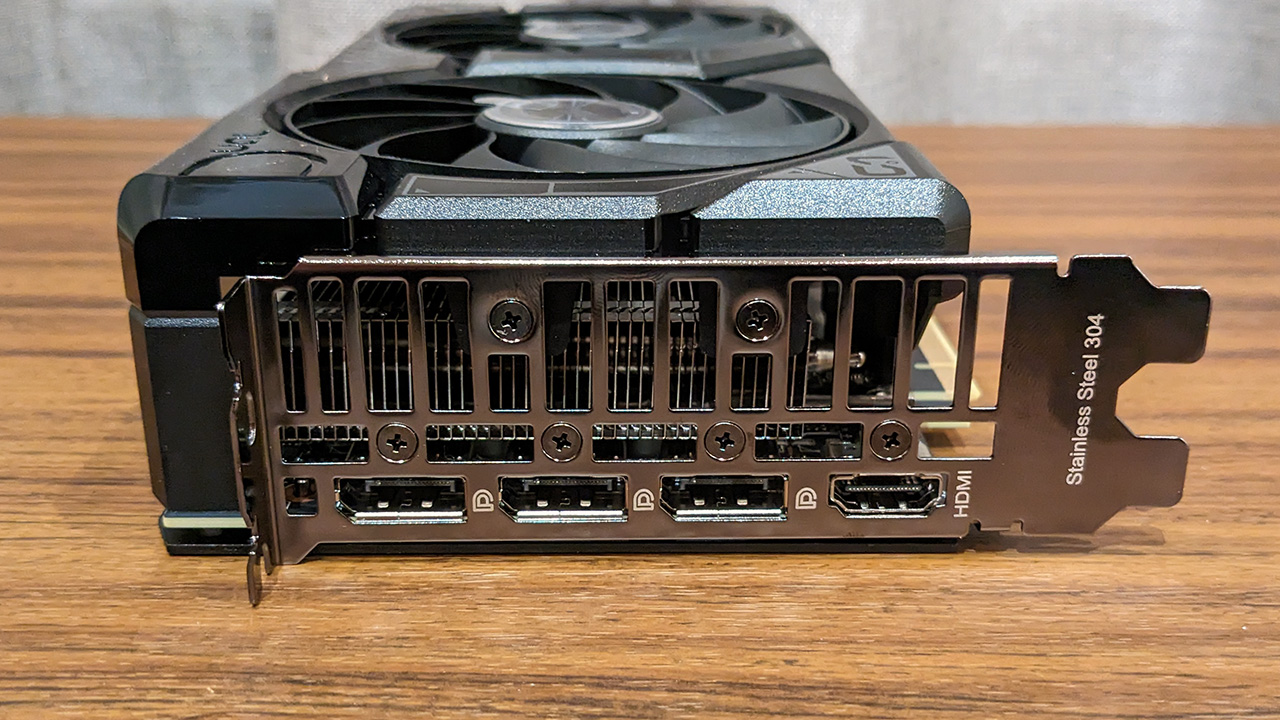
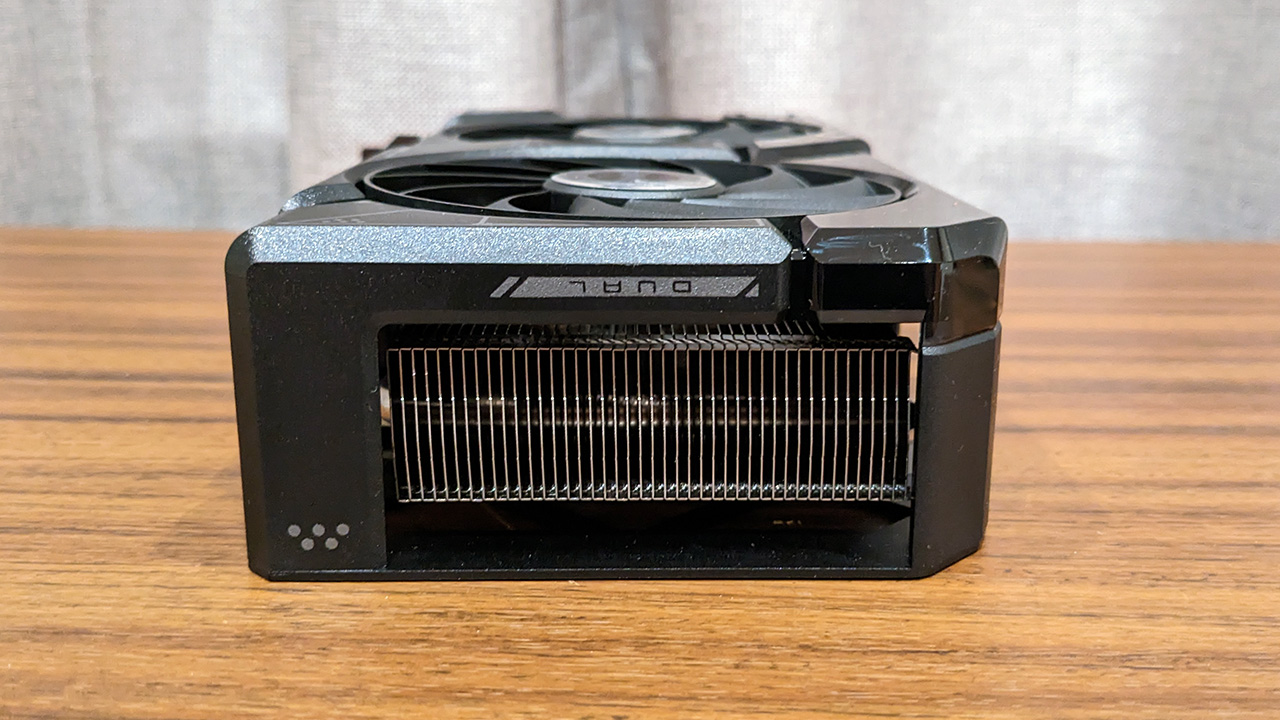
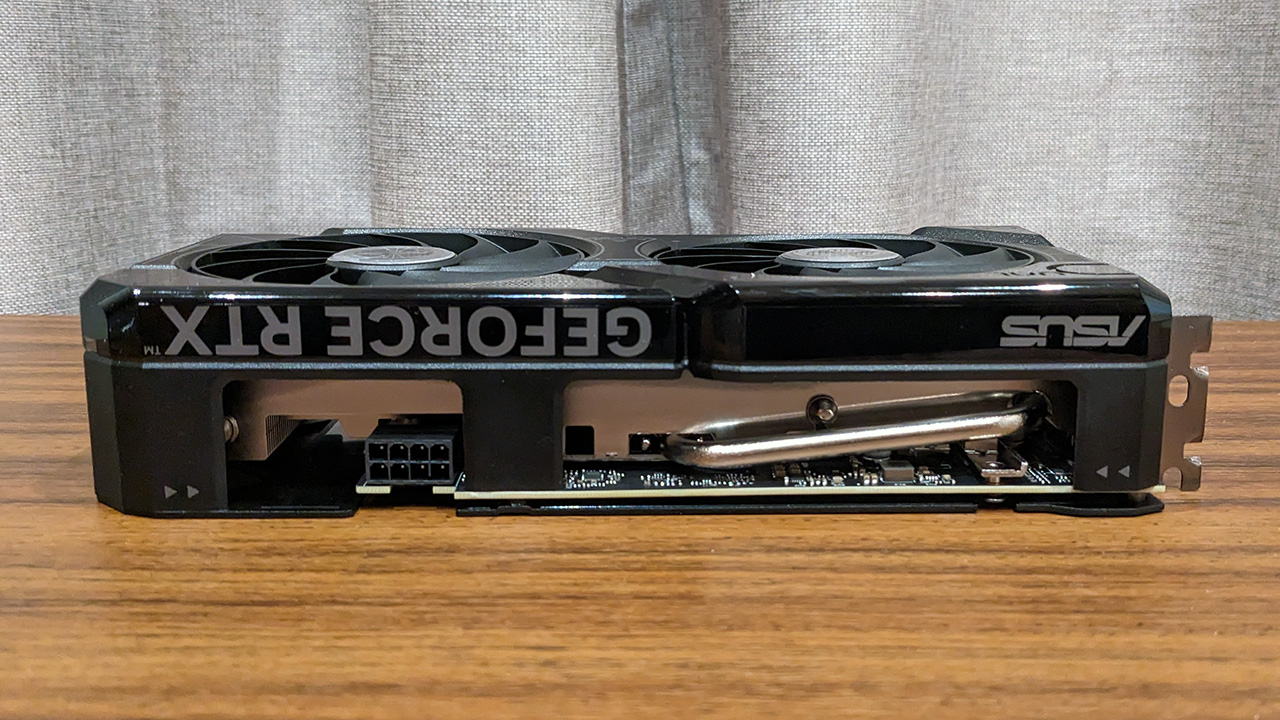
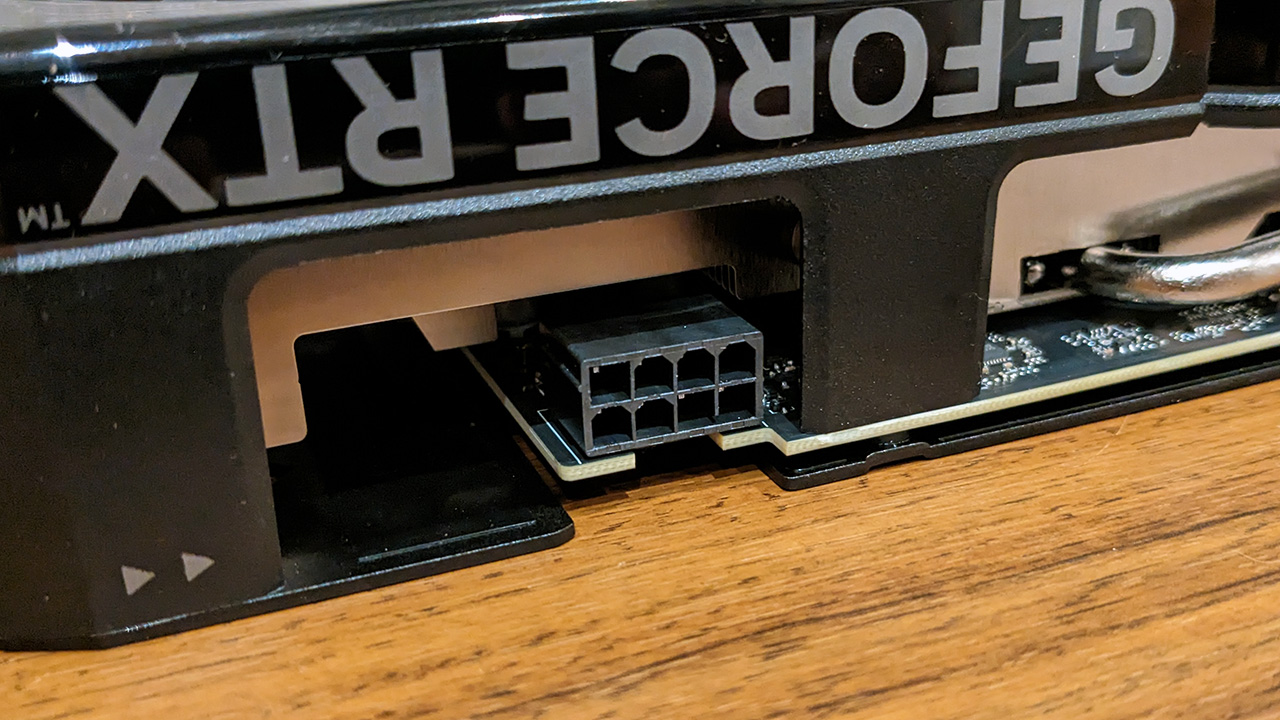
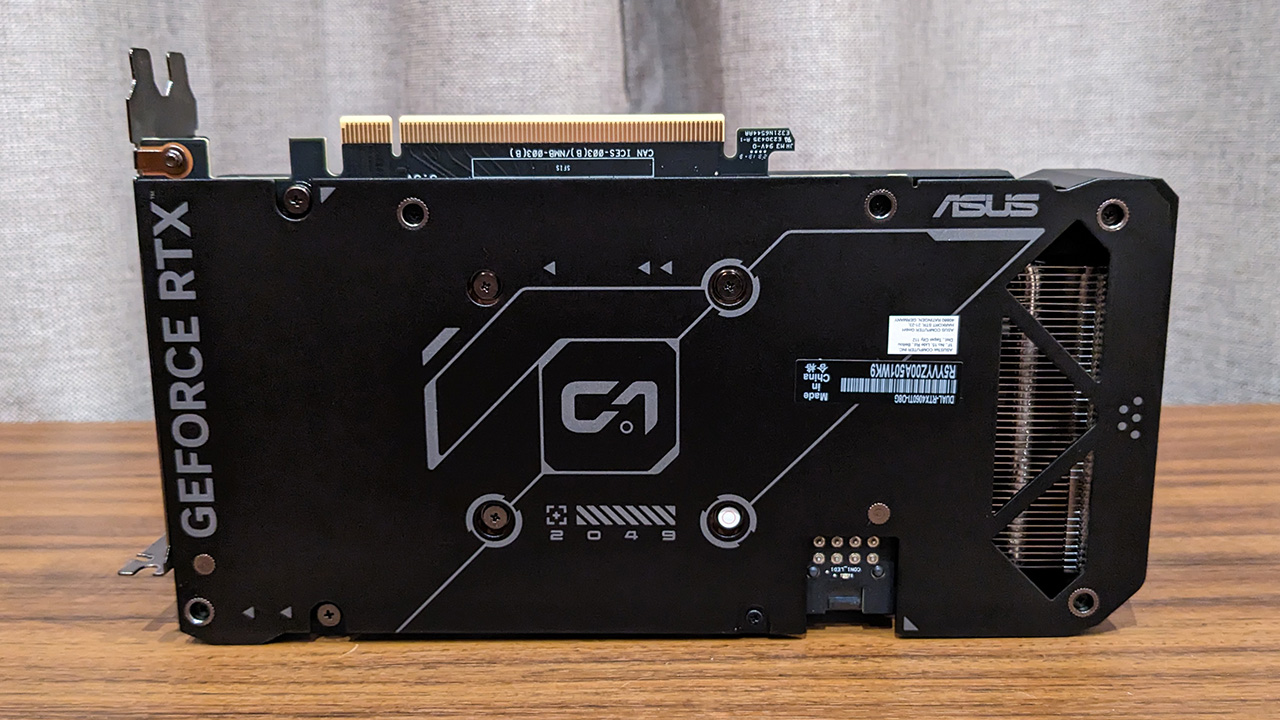
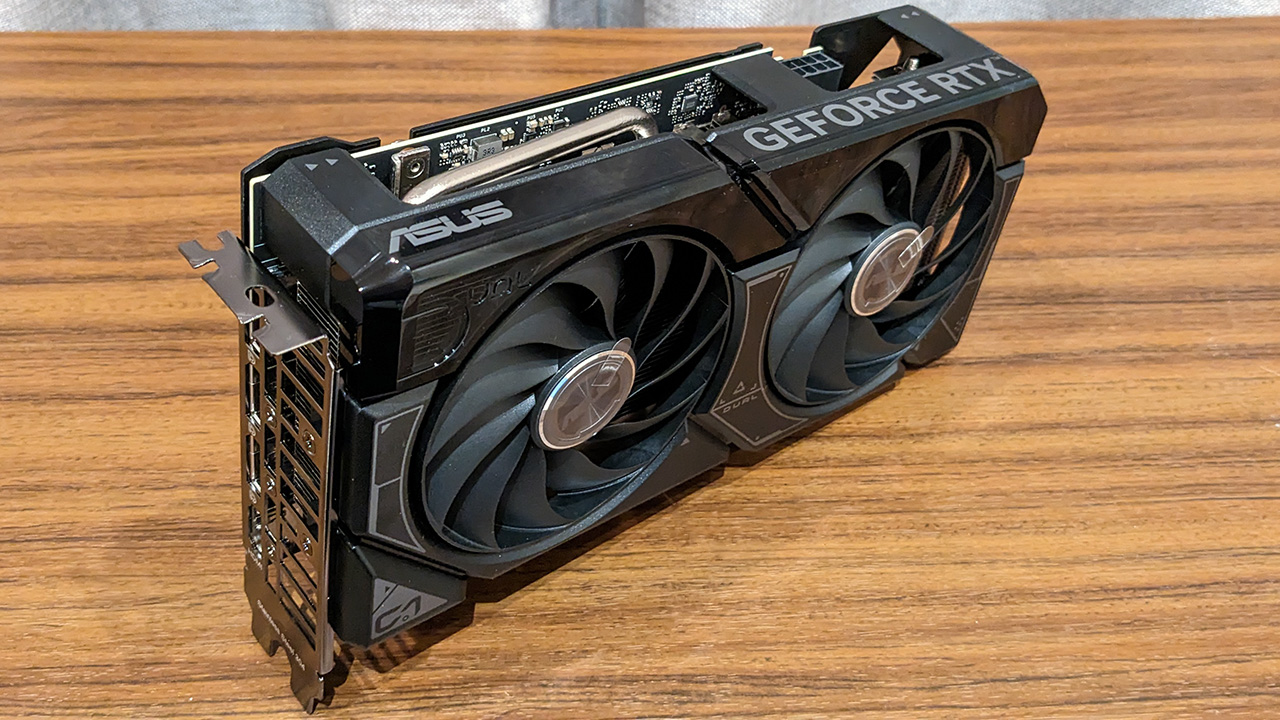
The Asus Dual comes with a single 8-pin PCIe power connector. That's great news for gamers with basic power supplies. The 16-pin adapter is overkill and honestly pointless for a card with a relatively thrifty 160W TDP.
As a gamer who prefers to look at what's on the screen rather than the card that drives it, I like its no nonsense appearance.
The Asus Dual comes with a standard three DP 1.4 ports plus one HDMI 2.1 port. DP 2.0 is absent, but its unnecessary on a card that won't be pushing high FPS numbers at 4K, let alone 8K to genuinely need it.
Physically, the Asus Dual RTX 4060 Ti features a very welcome compact design. It's still a 2.5 slot card but its 22.7cm length is much more case friendly than the big triple fan cards. Its appearance could be described as utilitarian. It's quite subtle in terms of design, with a predominantly black theme and a full cover backplate. As a gamer who prefers to look at what's on the screen rather than the card that drives it, I like its no nonsense appearance.
The dual fan cooler of the appropriately, if unimaginatively named Dual RTX 4060 Ti is perfectly adequate for a card with a 160W TDP. In an era where some high-end cards use three times that much power, if not more, it's great to see a 'normal' graphics cards. The Ada Lovelace generation features excellent power efficiency, with the AD106 truly excelling in this area. Two fans are all you need.
Asus Dual RTX 4060 Ti OC benchmarks and performance

As the Asus Dual RTX 4060 Ti OC has an overclock of just over 1% over the Founders Edition, the results of both cards are generally identical, with small margin of error differences separating them.
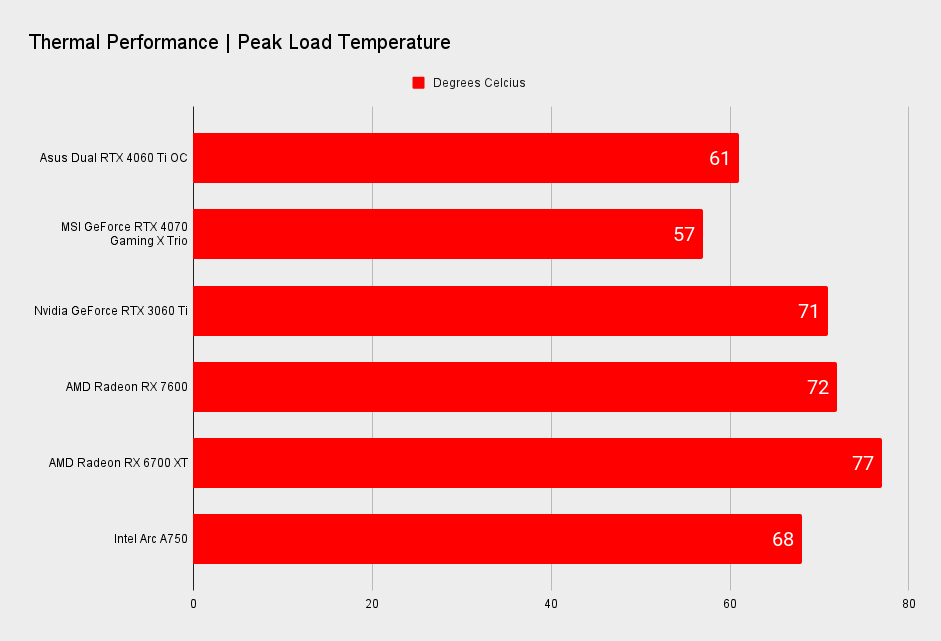
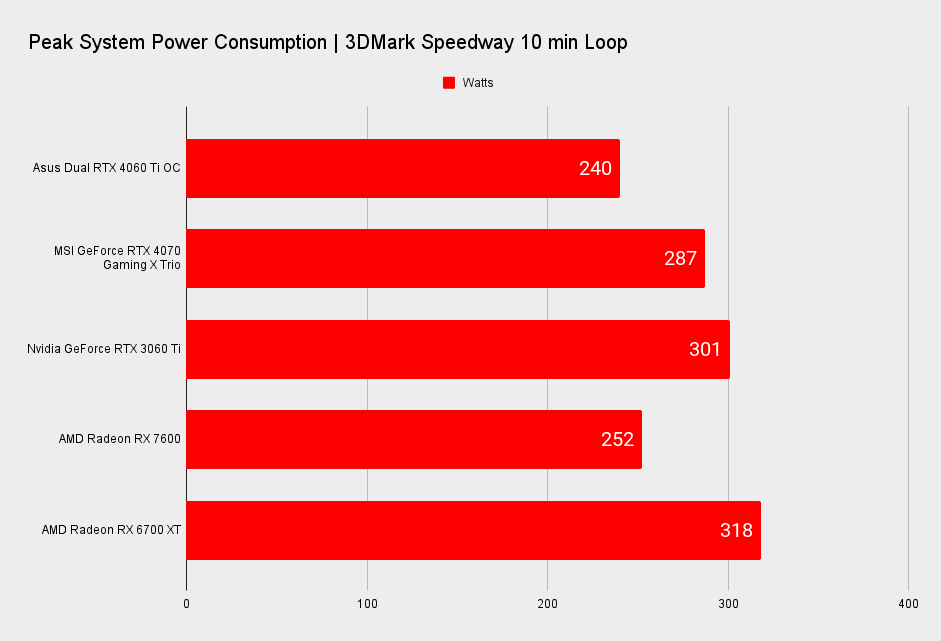
CPU: Intel Core i9 12900K
Motherboard: Asus ROG Maximus Z690 Apex
RAM: 2x 16GB G.Skill Trident-Z DDR5-6000 C36
Storage: 2TB Seagate FireCuda 530
Cooling: Cooler Master PL360 Flux 360mm AIO
PSU: Corsair AX1000
The thermal performance and system power consumption results highlight the strengths of the RTX 4060 Ti. A 61°C load temperature is proof there is no need to spend more money on the premium RTX 4060 Ti variants. You might save a few degrees, but it won't matter when a dual fan card like the Asus remains generally quiet at all times.
Sure, spending more will get you a factory overclock and a couple of percent more performance at best, and maybe a better looking design and some RGB LEDs, but in terms of cooling, triple fan, triple slot coolers are complete overkill on any AD106 equipped graphics card. The Asus Dual gets the balance right.
The low power consumption of the Asus Dual is simply stellar. The Ada generation delivers awesome power efficiency and performance per watt.
Synthetic gaming performance

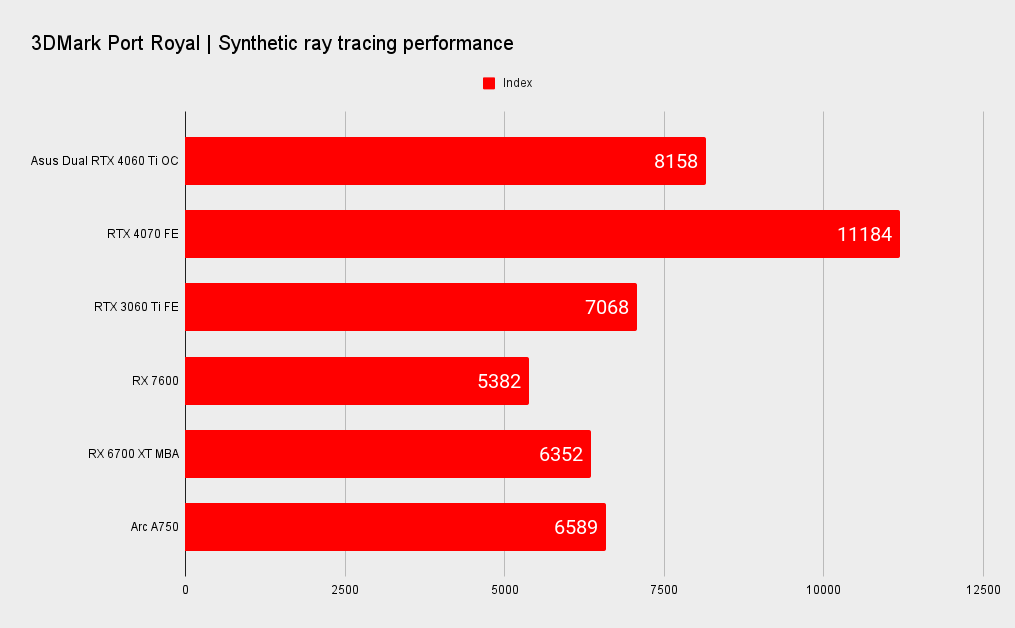
1080p Gaming Performance
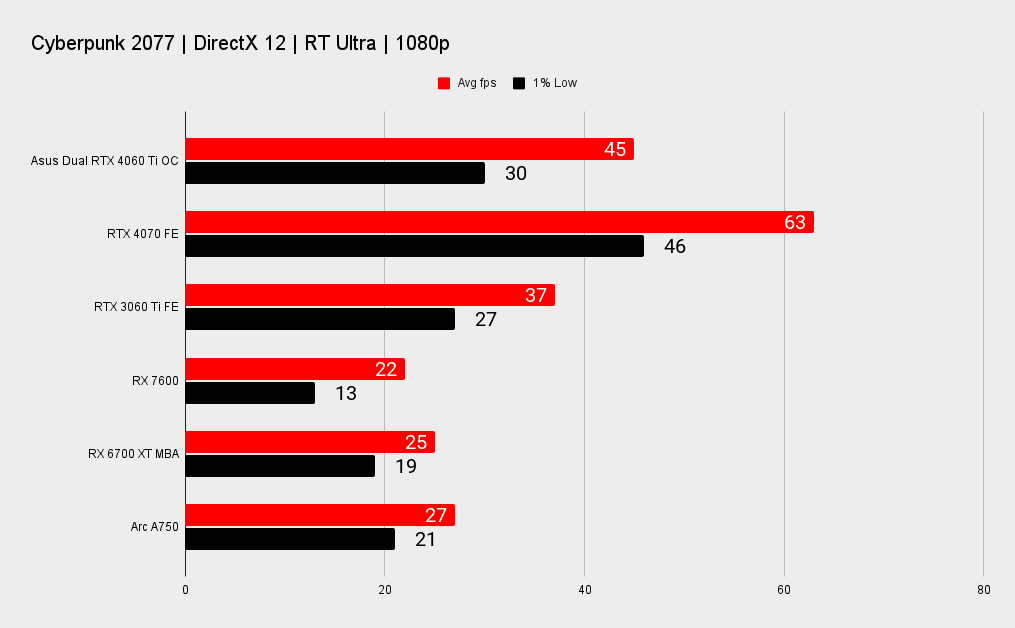
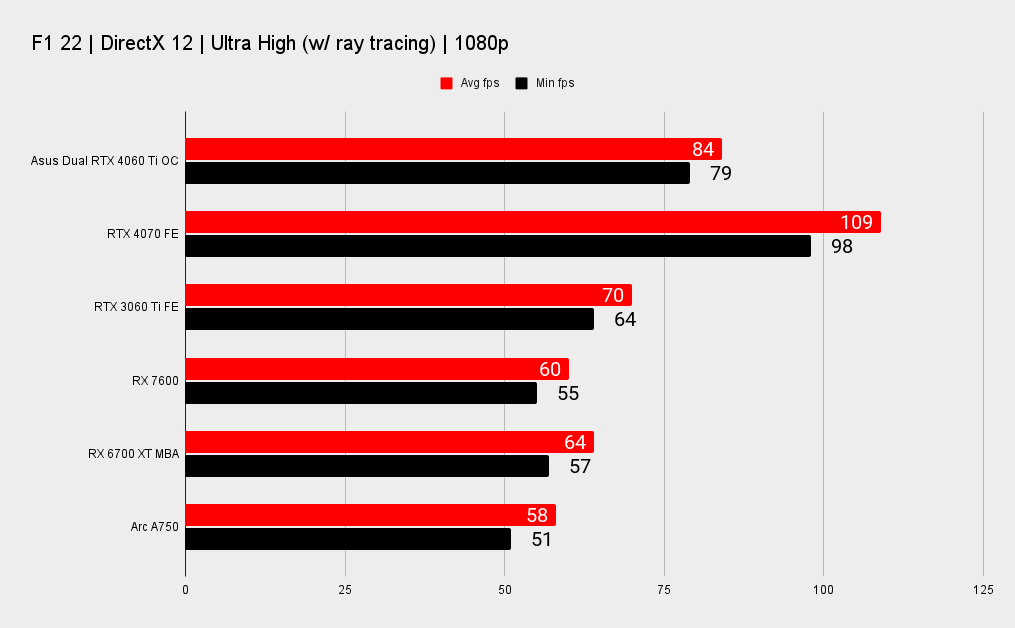
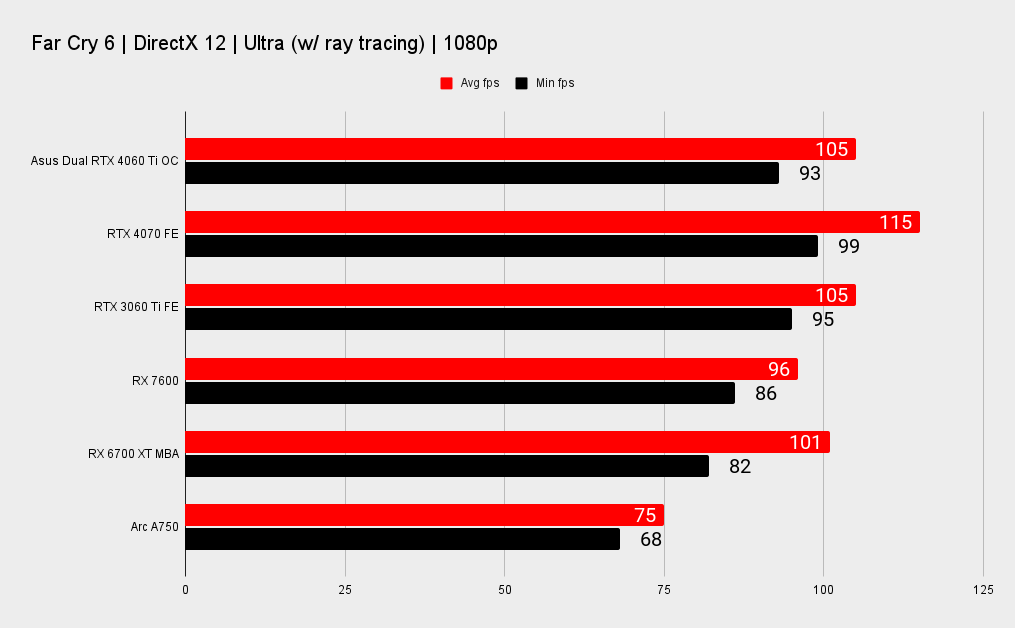
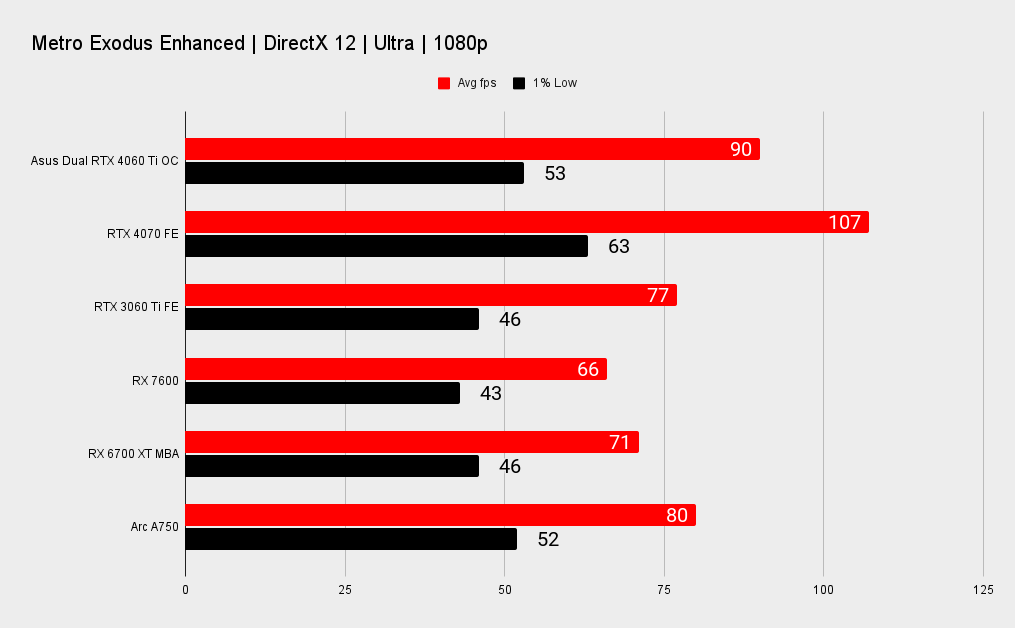
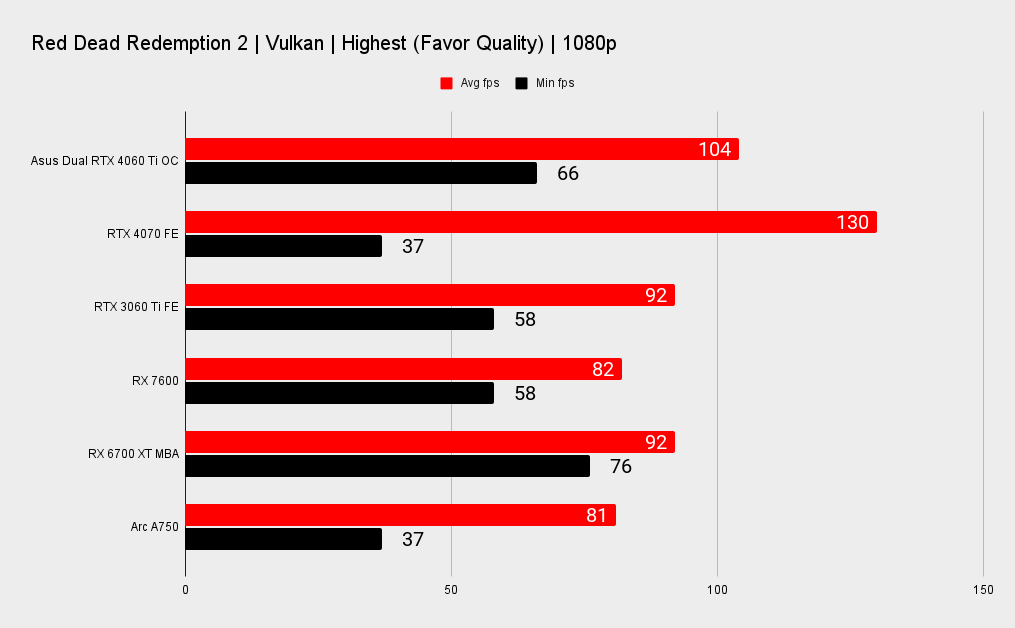
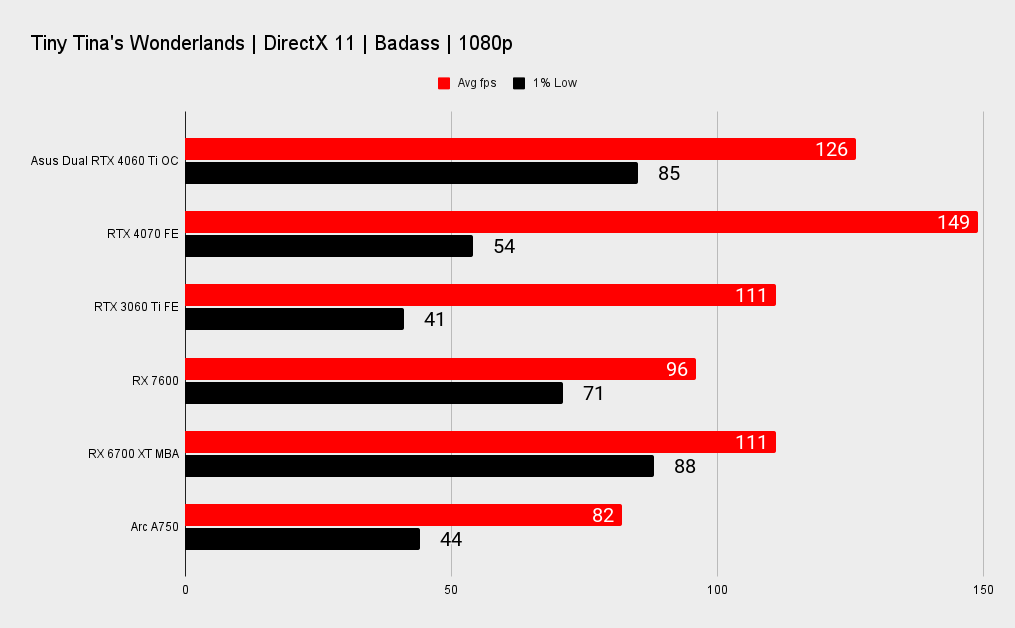
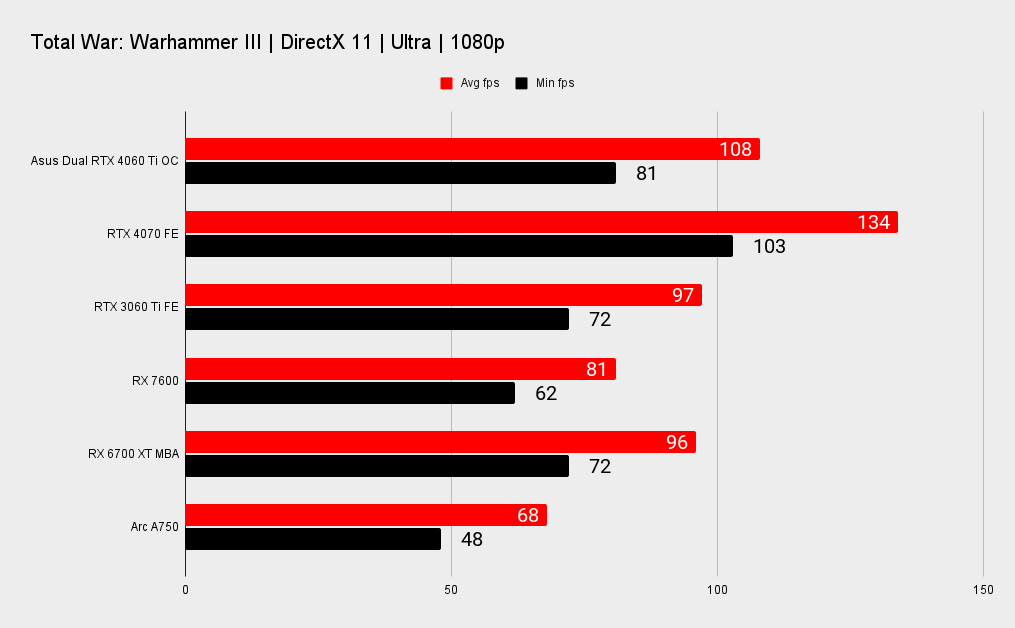
1440p Gaming Performance
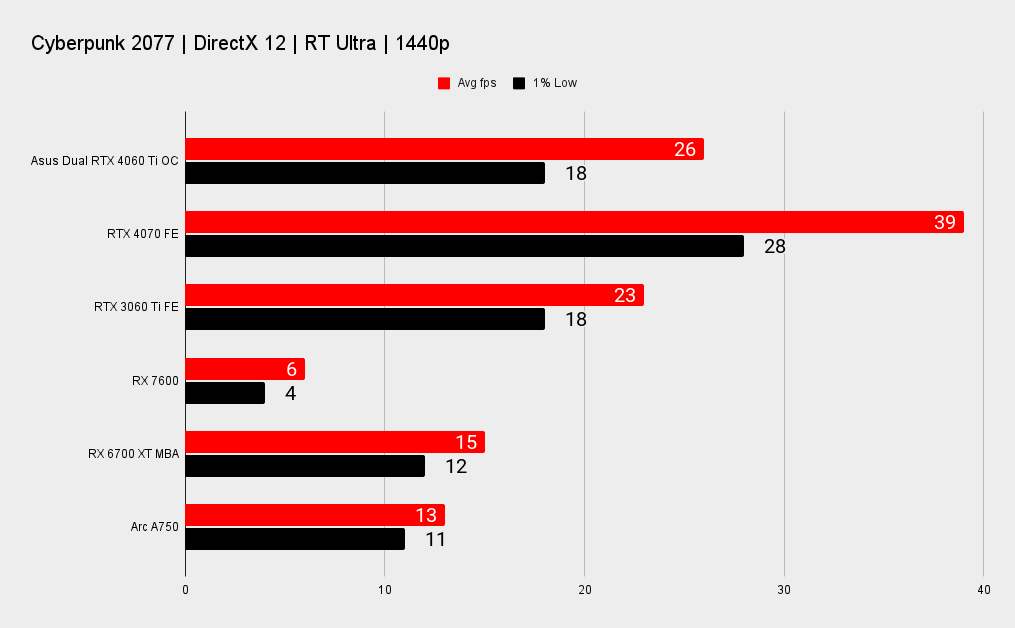
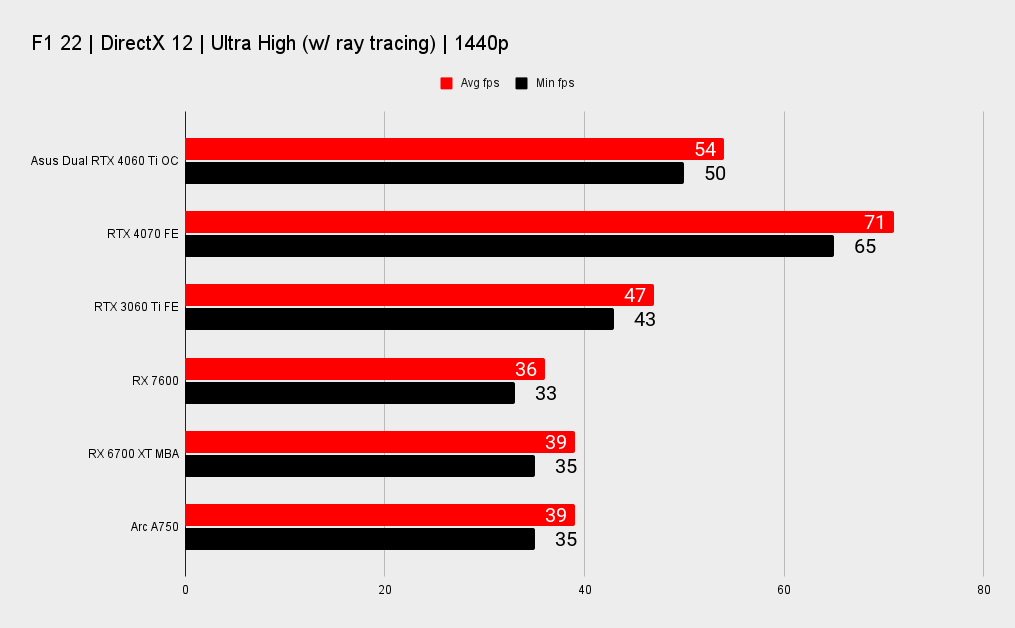
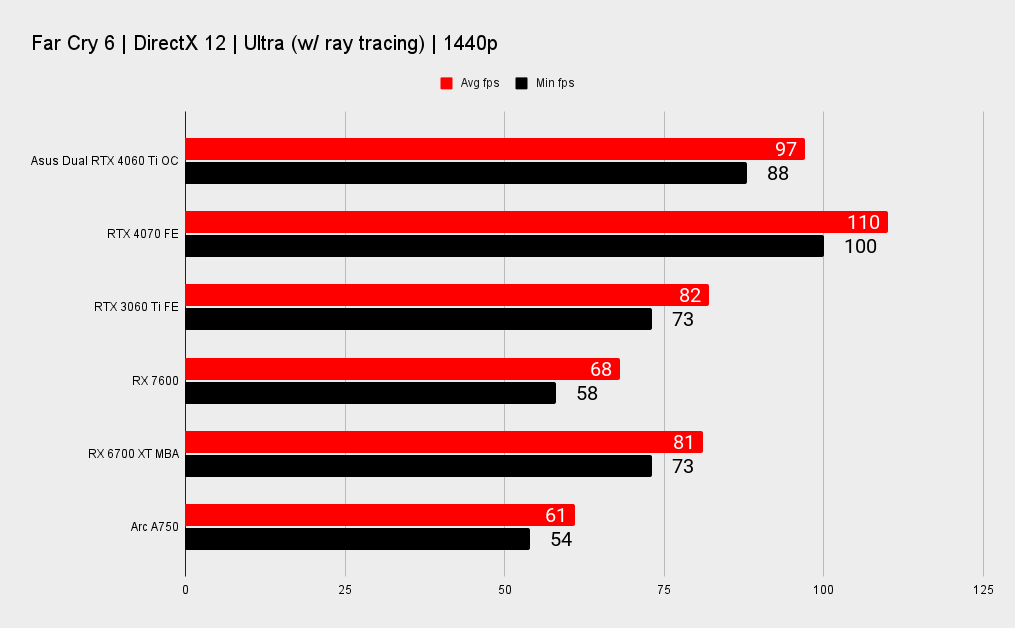
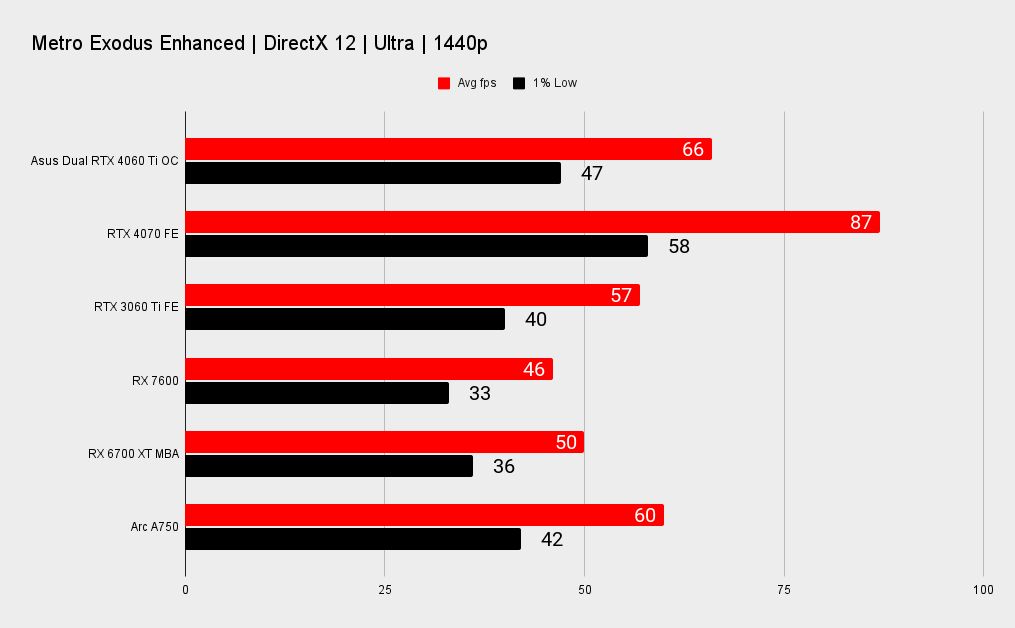
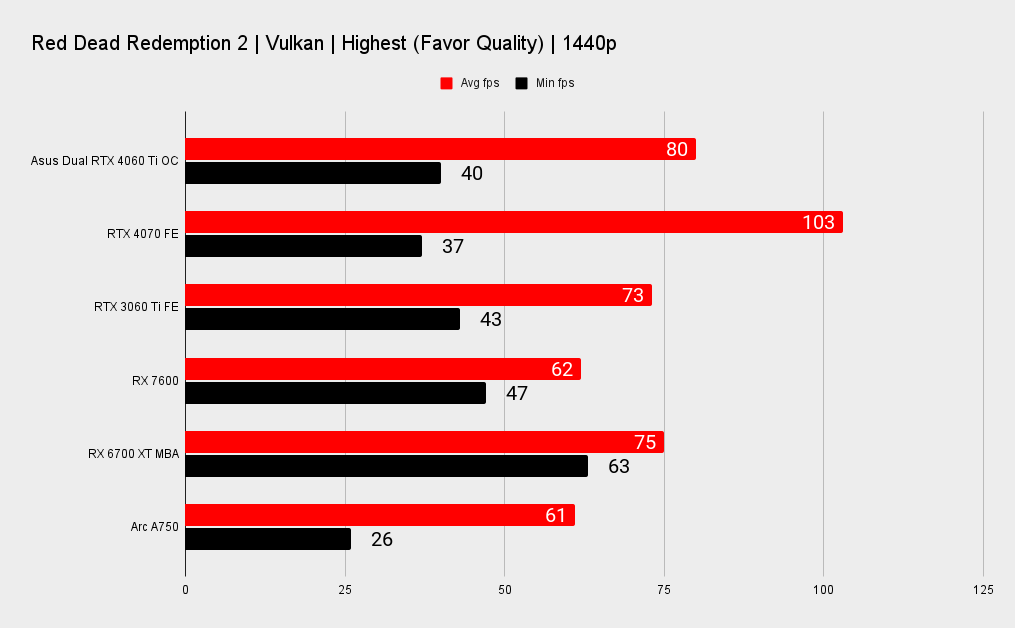
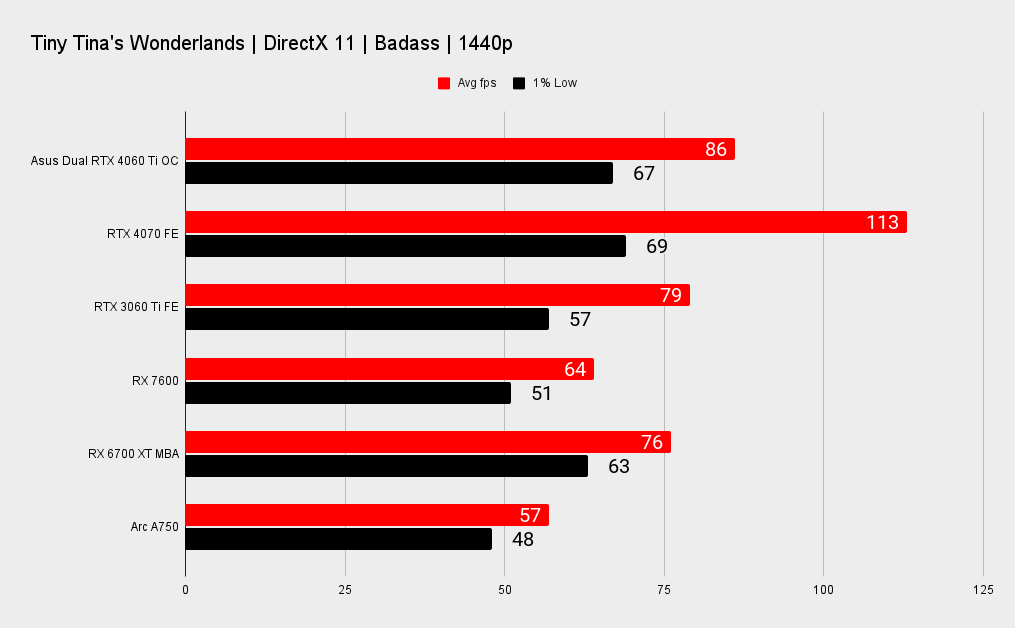
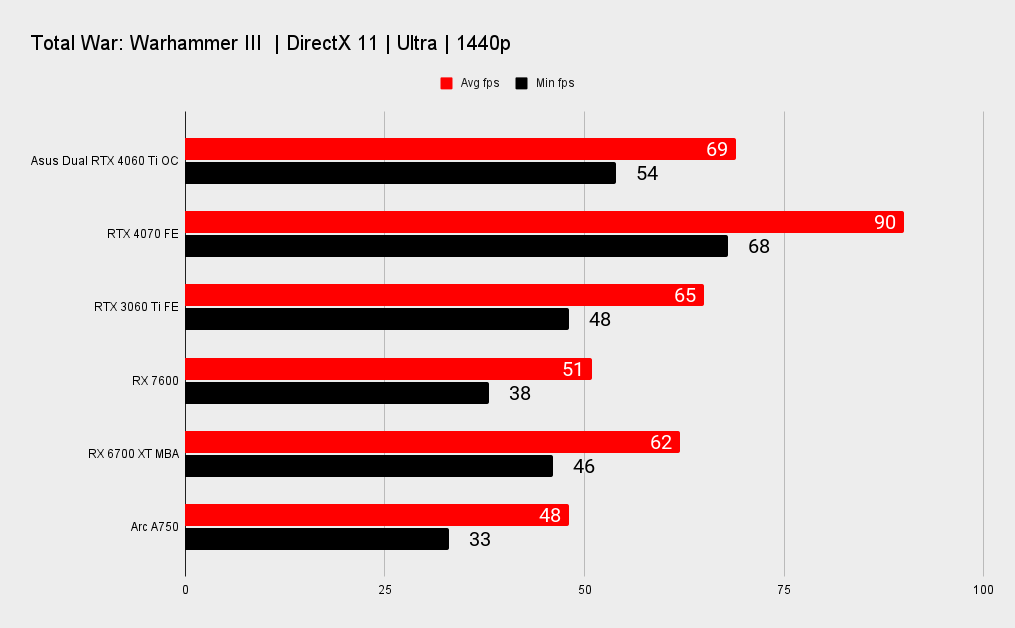
Asus Dual RTX 4060 Ti OC analysis

The RTX 4060 Ti is easily able to power through games at 1080p It outperforms the RTX 3060 Ti by a good margin, and does so while consuming much less power. In games with ray tracing support, it does a good job, and if you enable DLSS, and particularly DLSS 3 and Frame Generation in the games that support it, the RTX 4060 Ti will play everything at high settings at 1080p without a hitch.
It's a capable 1440p card too. It generally doesn't have the horsepower to push high quality 1440p monitors at 144Hz plus without lowering some settings but it's still good for 1440p. It remains to be seen just how that 8GB frame buffer will go in the next couple of years. Revisiting the performance of the RTX 4060 Ti 8GB against the upcoming RTX 4060 Ti 16GB will be an interesting proposition, though Nvidia itself has been at pains to point out that there is essentially no performance uplift from a host of games it's tested.
In less demanding games including esport titles, the RTX 4060 Ti will purr along without a worry in the world.
You can run more than a few games at 4K too, though the RTX 4070 is a better option should you wish to do that. DLSS will give you a nice bump in performance, but the most demanding games, such as Cyberpunk 2077, effectively remain out of reach at 4K unless you step up to much more expensive cards.
Asus Dual RTX 4060 Ti OC verdict

Spending any more on a premium RTX 4060 Ti is simply a waste of money.
The RTX 4060 Ti is fundamentally a good card, but is hobbled by its expensive pricing and the dubious wisdom of an 8GB frame buffer on a $399 graphics card in 2023. That is no criticism of the Asus Dual, as it's a problem all RTX 4060 Ti cards face. If this GPU was priced at $299 and named the RTX 4060, judgments on it would be entirely different, and far more positive.
Price aside, it's got its strengths. It outperforms the RTX 3060 Ti at the same $399 RRP while offering much better performance per watt, with cooler and generally quieter operation. Plus, you get the benefits of DLSS 3 in games that support it, while Frame Generation adds a significant performance boost that further elevates it above similarly priced last-gen cards.
The Asus Dual is a smart offering, delivering the essentials of the AD106 GPU. It's cooling performance is proof that there's simply no need to pay more for a larger triple slot card. The dual fan design is perfectly capable of keeping the card quiet at all times without sacrificing temperatures, which during my testing, remained low.
It looks good too though it won't appeal to everyone, particularly if you've got a windowed case and like to bling things up a bit.
Whether the Asus Dual RTX 4060 Ti can be recommended really comes down to what's in your rig right now. If you have something like an RTX 3060 Ti or RX 6700 XT, the gains aren't worth the outlay. But if you're upgrading from an older GTX 10-series card or something like an AMD RX 580 or RX Vega, then you'll get a very good boost in performance in a cool and quiet-running package.
And that's the point of the card. The RTX 4060 Ti will sell well, and it will continue to do so for a couple more years yet. All it needs is a price readjustment. If Nvidia is feeling generous, there's nothing stopping it from dropping the RTX 4060 Ti to $350 or less, at which point it becomes a different proposition. That would bring it closer to the market positioning you'd expect from a card with its specifications.
If, or when price drops ever happen, the Asus Dual RTX 4060 Ti will remain one to watch. Spending any more on a premium RTX 4060 Ti is simply a waste of money.
Asus' Dual RTX 4060 Ti is fundamentally a very good graphics card with excellent power efficiency, a smart design, and the Ada generation feature set. But like all RTX 4060 Ti cards, it's more expensive than a board with a small chip and middling spec has a right to be. Last gen graphics cards also still present formidable competition. At least while they remain in the market.

Chris' gaming experiences go back to the mid-nineties when he conned his parents into buying an 'educational PC' that was conveniently overpowered to play Doom and Tie Fighter. He developed a love of extreme overclocking that destroyed his savings despite the cheaper hardware on offer via his job at a PC store. To afford more LN2 he began moonlighting as a reviewer for VR-Zone before jumping the fence to work for MSI Australia. Since then, he's gone back to journalism, enthusiastically reviewing the latest and greatest components for PC & Tech Authority, PC Powerplay and currently Australian Personal Computer magazine and PC Gamer. Chris still puts far too many hours into Borderlands 3, always striving to become a more efficient killer.
